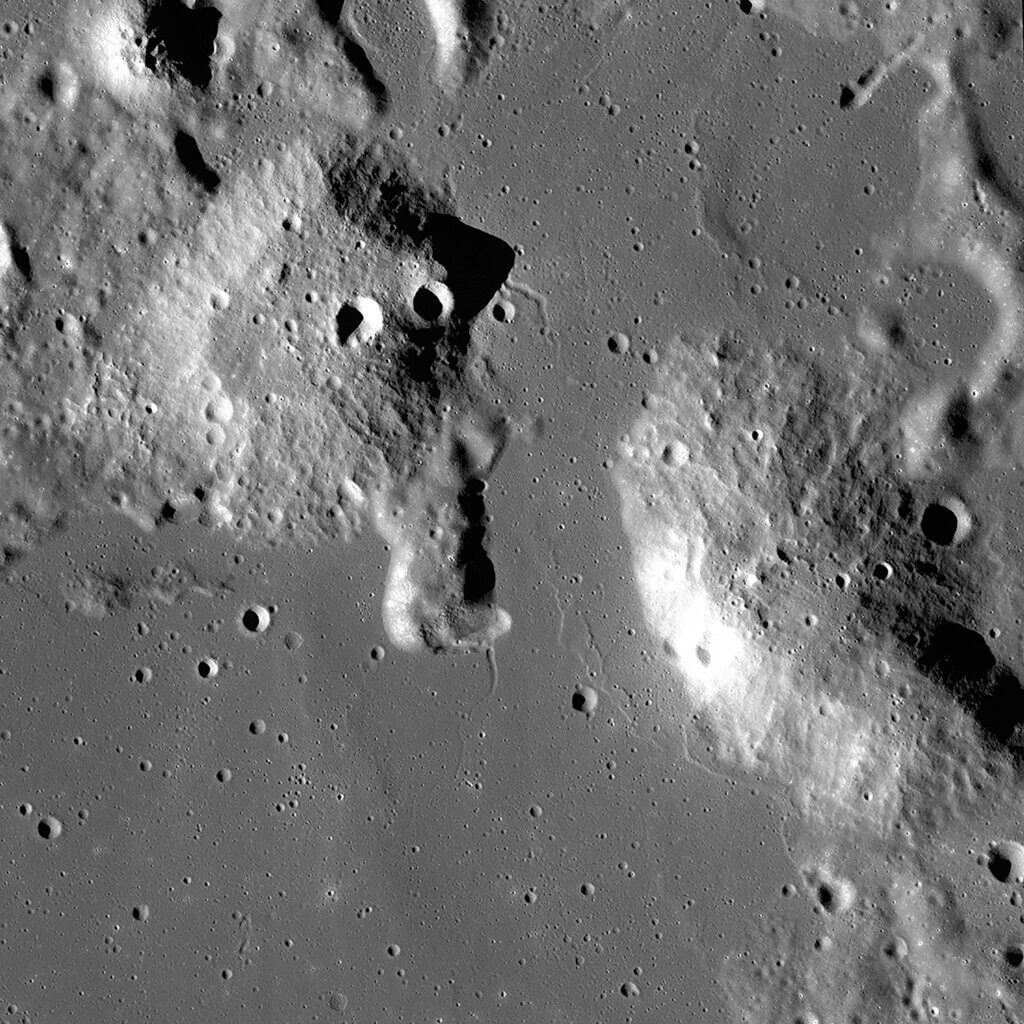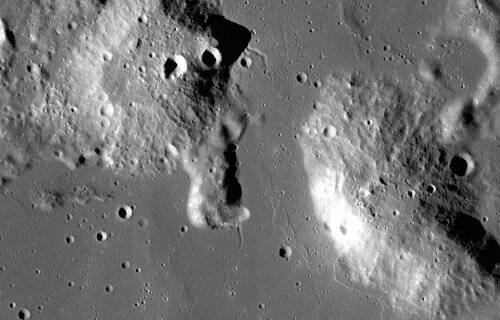
WASHINGTON — NASA is to launch a “priority” mission to explore mysterious domes on the moon. The space agency announced a rover will visit the Gruithuisen Domes, a geological feature that has baffled scientists.
The domes are suspected to have been formed by a sticky magma rich in silica, similar in composition to granite. On Earth, however, formations like these need oceans of liquid water and plate tectonics to form, but without these key ingredients on the Moon, lunar scientists have been left to wonder how these domes formed and evolved over time.
The Lunar Vulkan Imaging and Spectroscopy Explorer (Lunar-VISE) investigation, slated for 2025, will consist of a suite of five instruments. Two of them will be mounted on a stationary lander and three mounted on a mobile rover to be provided as a service by a Commercial Lunar Payload Services (CLPS) initiative vendor.
Over the course of ten Earth days (one lunar day), Lunar-VISE will explore the summit of one of the Gruithuisen Domes. By analyzing the lunar regolith at the top of one of these domes, the data collected and returned by Lunar-VISE’s instruments will help scientists answer fundamental open questions regarding how these formations came to be.

Announced June 2 as part of a “Priority Artemis Science” mission, the data also will help inform future robotic and human missions to the Moon.
“We’ve got a lunar mystery on our hands! The Gruithuisen Domes are a geologic enigma,” writes NASA’s Caroline Capone. “Based on early telescopic and spacecraft observations, these domes have long been suspected to be formed by a magma rich in silica, similar in composition to granite. The real mystery is how such silicic magmas could form on the Moon. In order to truly understand these puzzling features, we need to visit the domes, explore them from the ground, and analyze rock samples. Luckily, NASA is planning to do just that! Hopefully, in just a couple of years we will better understand this lunar mystery!”
Adding to the growing list of commercial deliveries slated to explore more of the Moon than ever before under Artemis, NASA has also selected a second investigation. The Lunar Explorer Instrument for space biology Applications (LEIA) science suite is a small CubeSat-based device. LEIA will provide biological research on the Moon – which cannot be simulated or replicated with high fidelity on the Earth or International Space Station – by delivering the yeast Saccharomyces cerevisiae to the lunar surface and studying its response to radiation and lunar gravity.
“The two selected studies will address important scientific questions related to the Moon,” says Joel Kearns, deputy associate administrator for exploration in NASA’s Science Mission Directorate. “The first will study geologic processes of early planetary bodies that are preserved on the Moon, by investigating a rare form of lunar volcanism. The second will study the effects of the Moon’s low gravity and radiation environment on yeast, a model organism used to understand DNA damage response and repair.”
Report by Dean Murray, South West News Service

Craters? play of light and shadow… Hello!!!
for real. nasa can no be that stupid, can it?
No, they just believe that YOU are “that stupid”.
A “play of light and shadow” doesn’t account for the shadows to the right of the domes, which cannot be faked and which represent a dome, not crater.
AZ1971 say what?
Where is sun? What took pic?
They don’t mean the small craters, they mean the larger hills. Whilst not dome-shaped today, probably, they once were.
This is really important, because if these domes [hills] are made of some form of granite, it means in the past, the moon underwent tectonic plate motion. This means the moon probably differentiated into oceanic and terrestrial crustal types, with subduction. Which also means the moon possesses more mafic (iron & magnesium) rock types.
Most of the native rock on the moon is buried under lots of lunar dust, which is the debris from the impacts which left the small craters.
not domes, craters.
I suspect (don’t quote!) that someone in NASA has received a gift card for the Lunar Alien Shopping Mall and knowing (it is printed right on the card) that it must be redeemed in person: proceeding accordingly they are. How they expect to return said goods: IDK but those selfies at The Mall may be deemed: Priceless! Priceless, that is, if they can be properly encrypted and not leaked.
Well, if the scientists aren’t just trying to funnel $$$, let’s go see what’s in there!!
LOL
Look up Karl Wolfe Moon Base and you’ll get better material than this.
In honor of ZF Danes at a conference in the 1960’s and a claim that some Moon rocks will tell the origin of the Moon, “What if it is basalt?”
any one with half a brain can clearly see its an alien skull covered in moon dust geez
Interesting that NASA wants to focus research on lunar formations, as opposed to figuring out what the heck the UFO’s are flying in and out of the water and within the earth’s skies for many decades.
Guess:
The lack of an atmosphere and the lower gravity allow the Lunar lava and surface material to mimic water and tectonic plate effects to come up with a similar features we see on Earth.
How about they reproduce a hexagonal crater in a laboratory environment, then they might begin to learn what causes mountains or hills or rills. Instead we just get theory, conjecture and requests to send more money from NASA.
Ask the Chinese what they are. They will be there way before us with technology stolen from us.. LOL or given tho them by “someone”
Study Finds is full of annoying ads, I will never return to this site again!
You’re not forced to look at them. Almost all news sites pay their way through ads. Or you could subscribe, eh?
In these photographs craters have a dark shadow on the left, the domes are lit on the left with their shadow cast to the right.
Hey SpaceShot; one is a hill one is a hole
What happened to my comment?
A lunar day is 29 1/2 earth days, not 10 earth days .
This is a play for funding, and possibly a cover for exploring artificial structures that are up there already.
It’s called running of of things to go and still wanting to get a big check!!!!!
They’re planning to deposit yeast on the moon’s surface? That’s worst kind of contamination.
Heavy metal meteor strike. The core penetrates into the soft surface of the moon, the heat of the impact causes expansion of the soft material, which then freezes in place. This is especially exasperated if there is water below as the ice is momentarily turned to vapor and permeates the expanded dirt and then freezes. Dig a hole 6 feet, replace the dirt and one is left with a mound of dirt that takes a long time to “settle.” Given there’s no rain, wind, or other climatological forces, it remains for quite some time longer.
Now send me my grant money for solving this, lol.
*Exacerbate*.
You’re welcome.
“Exasperate is today most commonly used as a synonym of annoy, but for several hundred years it also had the meanings “to make more grievous” and “to make harsh or harsher.”
Unless you’re providing grant money, I’m okay with my own words, I’m older.
*Exacerbated*.
You’re welcome.